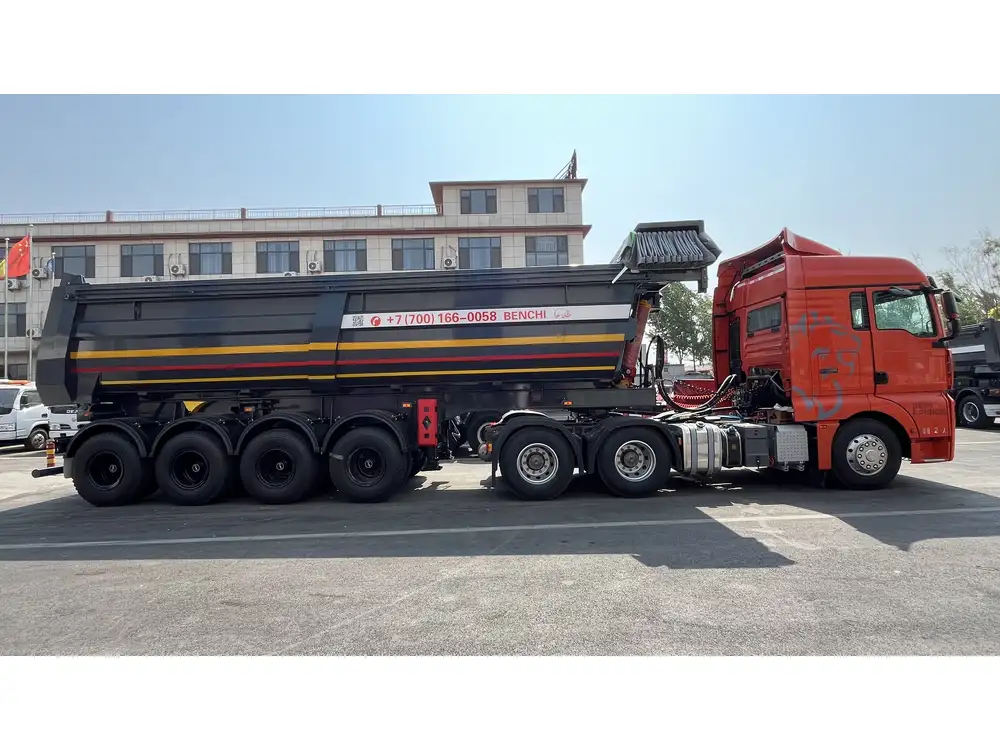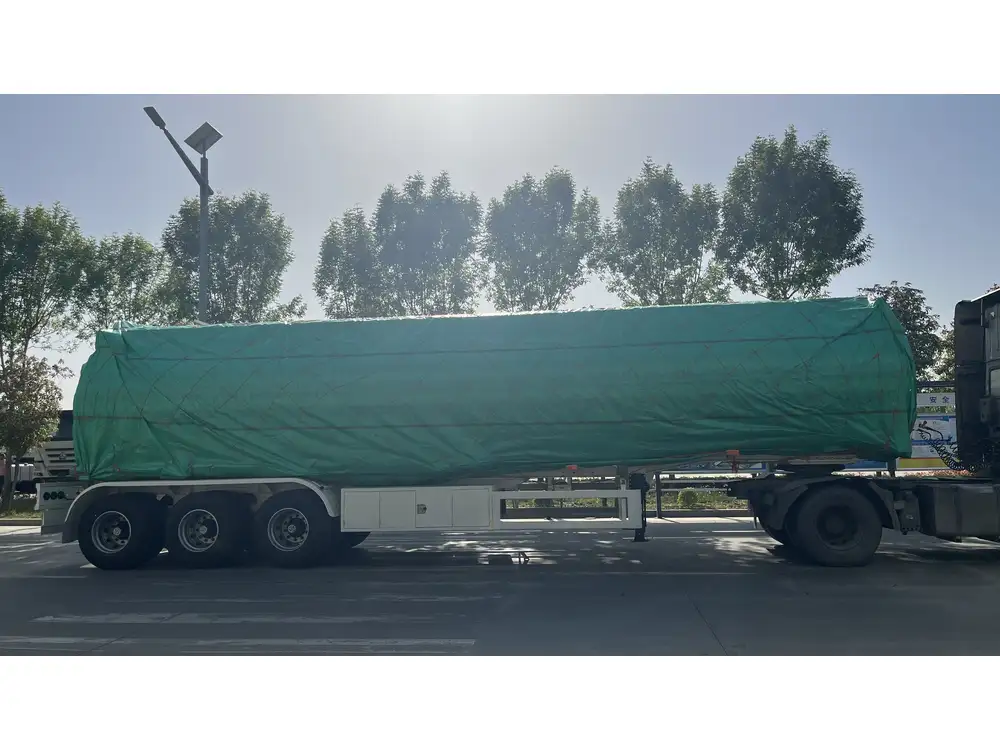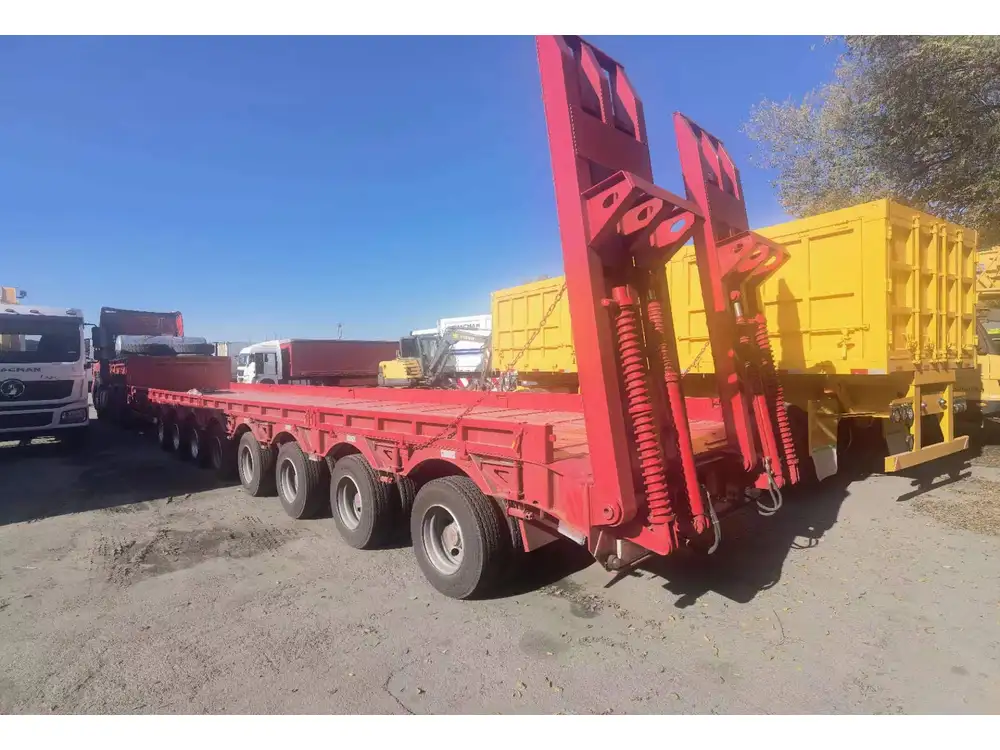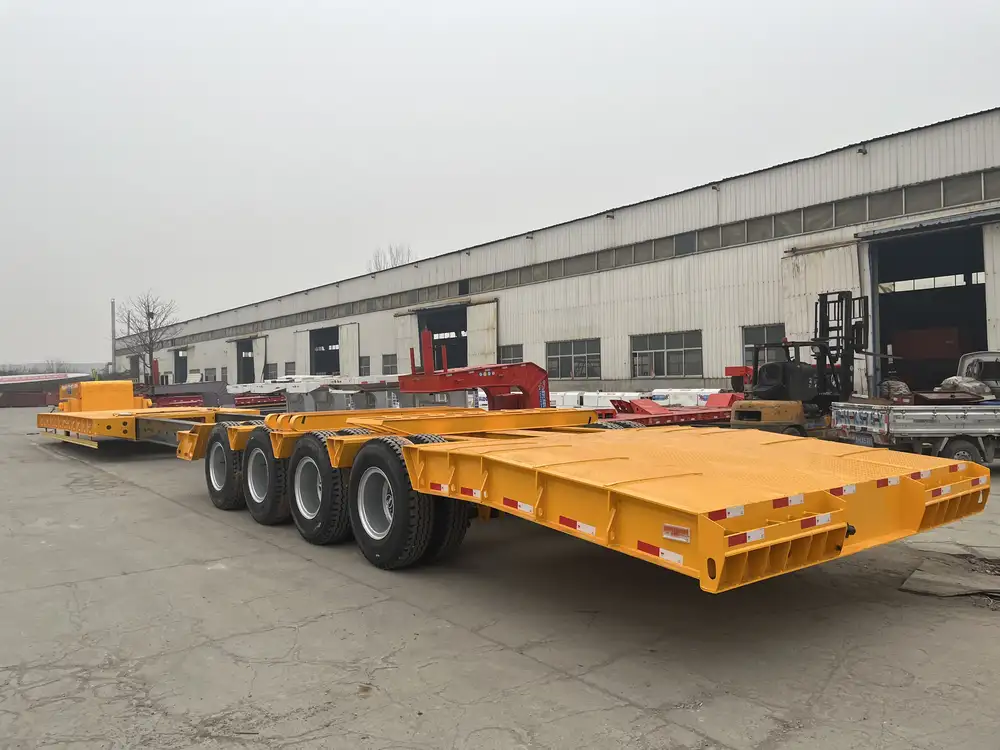In the realm of heavy-duty transportation, semi trailers play a pivotal role, often determining the efficiency and safety of freight movements across vast distances. Among the various components that define semi trailers, the steering axle stands out as a game-changer for maneuverability and control. This article delves into the intricacies of steering axle semi trailers, unveiling their critical features, functionalities, and benefits that enhance their operational utility.
What is a Steering Axle Semi Trailer?
A steering axle semi trailer is a specialized type of trailer designed to enhance the vehicle’s maneuverability by incorporating an independently controlled steering axle. This technology is particularly beneficial in urban or congested environments where tight turns and intricate navigation are imperative. Rather than having all axles in a fixed position, the steering axle allows for greater articulation, allowing the trailer to mimic the movements of the towing vehicle, thereby reducing the overall turning radius.
Key Components of a Steering Axle Semi Trailer
- Steering Axle: The front axle that can pivot as the cab turns.
- Kingpin: Connects the trailer to the fifth wheel of the tractor unit.
- Suspension System: Enables weight distribution and absorb road shocks.
- Braking System: Ensures stopping power and safety during operation.
- Tires: Designed for enhanced traction and stability.

Advantages of Steering Axle Semi Trailers
Improved Maneuverability
The primary advantage of a steering axle semi trailer is its enhanced maneuverability. By allowing the rear to pivot in alignment with the truck’s steering, these trailers can navigate tight corners without excessive trailing or oversteering, making them ideal for urban logistics and delivery operations.
Reduced Tire Wear
Traditional trailers often experience uneven tire wear due to excessive scrubbing during turns. Steering axle semi trailers significantly reduce this phenomenon, prolonging tire life and minimizing replacement costs.

Increased Payload Efficiency
By maximizing the effective turning radius, operators can optimize their load capacity. This means more cargo can be loaded into a defined space, resulting in cost savings and enhanced productivity.
Enhanced Stability
When executed correctly, steering axle technology provides extra stability during high-speed maneuvers. This characteristic is especially crucial in emergency scenarios where maintaining control is paramount.
Types of Steering Axle Systems
The steering axles in semi trailers can be classified into various systems based on their design and functionality.
| Type | Description | Applications |
|---|---|---|
| Mechanical | Uses linkages and rods to steer the trailer axles based on the truck’s steering input. | General freight and construction. |
| Hydraulic | Utilizes hydraulic actuators to steer the axles, providing precise control. | Heavy haul and specialized transport. |
| Electronic | Employs electronic sensors and controls to adjust the steering angle dynamically. | Advanced logistics and high-performance applications. |

Applications of Steering Axle Semi Trailers
Steering axle semi trailers are invaluable across various industries. Below are some of the notable applications:
Urban Deliveries: Perfect for districts with narrow streets and tight corners, steering axles make deliveries efficient and hassle-free.
Construction Sites: Their maneuverability allows them to navigate through construction zones where space is constrained.
Event Logistics: Coordinating the layout for festivals or exhibitions can be challenging; these trailers facilitate smooth setups and take-downs.
Refrigerated Transport: When transporting sensitive goods requiring optimal handling, these trailers ensure stability even on rough terrain.
Performance Measurement and Considerations
When assessing the performance of a steering axle semi trailer, several key metrics must be measured:
Turning Radius
This is the crucial determinant of how well a trailer can navigate corners. Steering axles can considerably reduce the turning radius, making them more suitable for tight spaces.

Load Distribution
Evaluating how weight is distributed across the trailer’s axles is vital for performance and legality during transportation. An optimized load distribution contributes to efficient braking and better driving dynamics.
Stability Assessment
Factors like length-to-width ratio, center of gravity, and suspension play critical roles in the stability of the trailer. High-performing steering axle trailers typically exhibit lower levels of swaying and tilting during operations.
Common Issues and Solutions
Steering axle semi trailers, while beneficial, can encounter specific challenges. Below is a detailed examination of common issues along with their solutions.
| Issue | Description | Solution |
|---|---|---|
| Uneven Tire Wear | Arises from misalignment or incorrect loading. | Regular maintenance checks and alignments. |
| Steering Responsiveness | The axle may not react to the driver’s input efficiently if there are mechanical issues. | Conduct thorough inspections on the steering mechanism. |
| Brake Performance | Insufficient stopping power due to trailer weight or brake system failure. | Upgrade the braking system and ensure regular service. |
| Suspension Issues | Fatigue or failure can lead to reduced performance. | Implement regular checks and replace worn components promptly. |

Best Practices for Maintenance
To ensure the longevity and performance of steering axle semi trailers, manufacturers and operators should adhere to the following best practices:
Routine Inspections: Set up a regular inspection schedule to check steering components, brakes, and tires.
Proper Load Management: Always adhere to weight restrictions and ensure balanced load distribution to avoid unnecessary strain on the axles and suspension.
Use Quality Parts: Utilizing high-quality replacement parts during maintenance can make a significant difference in performance and safety.
Driver Training: Proper training for drivers on handling steering axle trailers can mitigate misuse and extend the trailer’s lifespan.
Enhancing Operational Efficiency with Technology
Modern advancements in technology have led to the integration of sophisticated systems that can further improve the performance of steering axle semi trailers. Examples include:
Telematics: Real-time tracking systems offer insights into vehicle performance, load conditions, and route optimization.
Active Steering Systems: Some cutting-edge trailers can autonomously adjust their steering angle based on speed and road conditions, providing enhanced safety and maneuverability.
Predictive Maintenance: Sensors that monitor the condition of various components can alert operators to potential issues before they become detrimental.
Conclusion
In light of the demanding nature of logistics and transportation, the introduction of steering axle semi trailers has revolutionized the market, offering unparalleled maneuverability and efficiency. As urban centers grow and the need for efficient freight transport increases, understanding the technology and functionality behind steering axles not only aids in informed purchasing decisions but also optimizes operational capabilities. By ensuring regular maintenance, harnessing technological advancements, and addressing potential challenges proactively, operators can ensure that they leverage the full potential of their steering axle semi trailers effectively and sustainably.
For any additional inquiries about our offerings or to learn more about the specific configurations that best suit your operational needs, do not hesitate to contact us. Our expert team is ready to assist you in enhancing your fleet performance while ensuring safety and compliance with industry standards.



